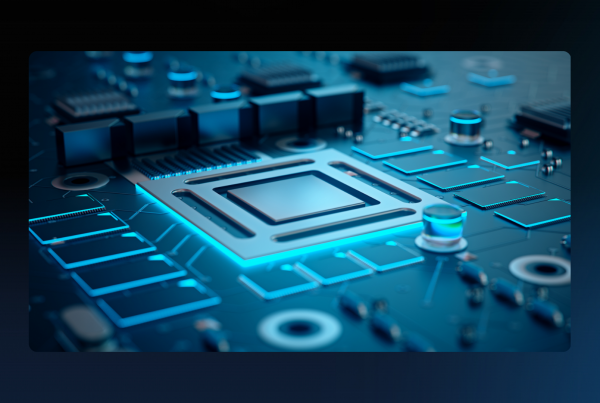In recent years, increasing attention has been directed towards strengthening energy resilience, prompting the creation of both national policies and international guidelines. These initiatives are likely to attract even more funding in the future, thanks to their wide-ranging benefits provided they are implemented thoughtfully. At the heart of this transition lies embedded software, which is set to play an important role in enabling smarter, more adaptive energy systems.
The future of energy isn’t just about generation… it’s about intelligence. Embedded software is the nervous system of a resilient grid. Without it, we’re powering tomorrow with yesterday’s brain (Roedan’s Innovation Officer: TC Gill)
A clear example of this can be seen in the UK’s National Cyber Strategy 2022, which highlights the importance of cyber resilience across critical national infrastructure, including the energy sector. And this is just one among many initiatives recognising the need for intelligent, secure, and responsive systems.
In this article, we explore the growing importance of embedded software in building resilient energy systems, and what we can expect in the years to come.
The role of embedded systems in the energy systems
Explained in simple terms, embedded software refers to specialised computer programmes designed to perform dedicated functions within larger mechanical or electrical systems. Unlike general-purpose software, which runs on standard computers, embedded software is housed within microcontrollers and processors inside devices such as solar inverters, wind turbines, battery storage units, and smart meters.
In energy systems, this software operates behind the scenes… collecting data, executing algorithms, managing resources, and communicating with other components. It plays a fundamental role in enabling autonomous decision-making, fault detection, and adaptive responses to external changes such as fluctuating demand or supply interruptions.
Application of embedded software
Embedded software is not only improving the functionality of individual energy devices but it also strengthens the resilience of the entire energy ecosystem. By embedding intelligence directly into hardware, these systems can make faster decisions, adapt to changing conditions, and communicate with other parts of the grid. Across various segments of the sector, embedded software is already playing a vital role with:
Renewable Energy: In solar farms, the software regulates inverter performance, tracks environmental data, and optimises energy output. In wind turbines, it manages blade pitch and yaw control for maximum efficiency.
Energy Storage: Battery management systems (BMS) rely on embedded software to monitor voltage, temperature, and state-of-charge, ensuring safety and extending battery life.
Smart Meters and Home Automation: In residential settings, embedded software in smart meters and IoT devices allows consumers to track usage, participate in demand-response programmes, and contribute to decentralised energy models.
Electric Vehicles (EVs): Embedded systems manage charging schedules, battery health, and vehicle-to-grid (V2G) interactions… helping EVs support the grid during peak hours.
Why resilience matters
Resilience in energy refers to a system’s ability to withstand, adapt to, and recover from disruptions, be they natural disasters, cyberattacks, equipment failures, or shifts in supply and demand. As energy networks become more complex with the integration of renewable sources and decentralised generation, the potential for instability grows.
It is important to point out that traditional energy systems were built around centralised, one-way generation models. Today, the shift towards distributed energy resources (DERs) – such as rooftop solar panels, electric vehicles, and home batteries – has transformed the grid into a dynamic, bi-directional system. Managing this complexity and ensuring continuous service despite volatility requires intelligence embedded deep within the infrastructure.
AI and ML as part of the future
It’s impossible to talk about the future of embedded systems in energy without mentioning two of today’s most talked-about technologies: artificial intelligence (AI) and machine learning (ML). As these tools become more integrated into energy infrastructure, we are clearly heading toward a new phase, one where systems are not only reactive but increasingly able to anticipate change.
With AI and ML, devices can learn from real-world data, adjust their performance on the fly, and work together across distributed networks with little need for human involvement. This kind of capability is becoming more important as energy systems grow in scale and complexity.
At the same time, edge computing is helping by bringing processing power closer to where data is generated. This helps reduce delays, improves responsiveness, and supports more reliable decision-making, even if parts of the network go offline or face digital threats.
To move in this direction, and to return to the point made earlier, governments and industry leaders need to recognise the role of embedded software as a foundation of modern energy systems. Support for open standards, ongoing research, and cooperation across sectors will all help make better use of these technologies and support a more secure and sustainable energy future.




